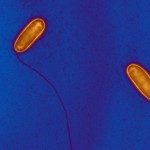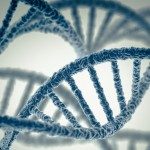Astonishing evolutionary trajectories
L. pneumophila belongs to a genus that comprises over 60 species, all of which are environmental bacteria that replicate in aquatic protozoa (a unicellular organism) in sweet water ponds and rivers. To understand how a harmless environmental bacterium can become a feared human pathogen, researchers from the Biology of intracellular bacteria Unit at the Institut Pasteur used functional and comparative genomics to deconstruct an entire bacterial genus and reveal for the first time the surprising parallel evolutionary trajectories that have led to the emergence of the major human disease agent, Legionella pneumophila.
Their research has uncovered an unexpectedly large repository of effector proteins (that are proteins secreted in the host cell where they perform and action) with evidence that Legionella species have acquired proteins from all domains of life (plant, animal, fungal, archaea) and have integrated them in their bacterial genomes. The bacteria have transformed these proteins, using them as “tools of oppression” to hijack host cellular functions, in particular targeting signal transduction, protein turnover (balance between protein synthesis and protein degradation) and chromatin modifying pathways.
https://www.pasteur.fr/en/research-journal/how-human-pathogens-may-emerge-environment







